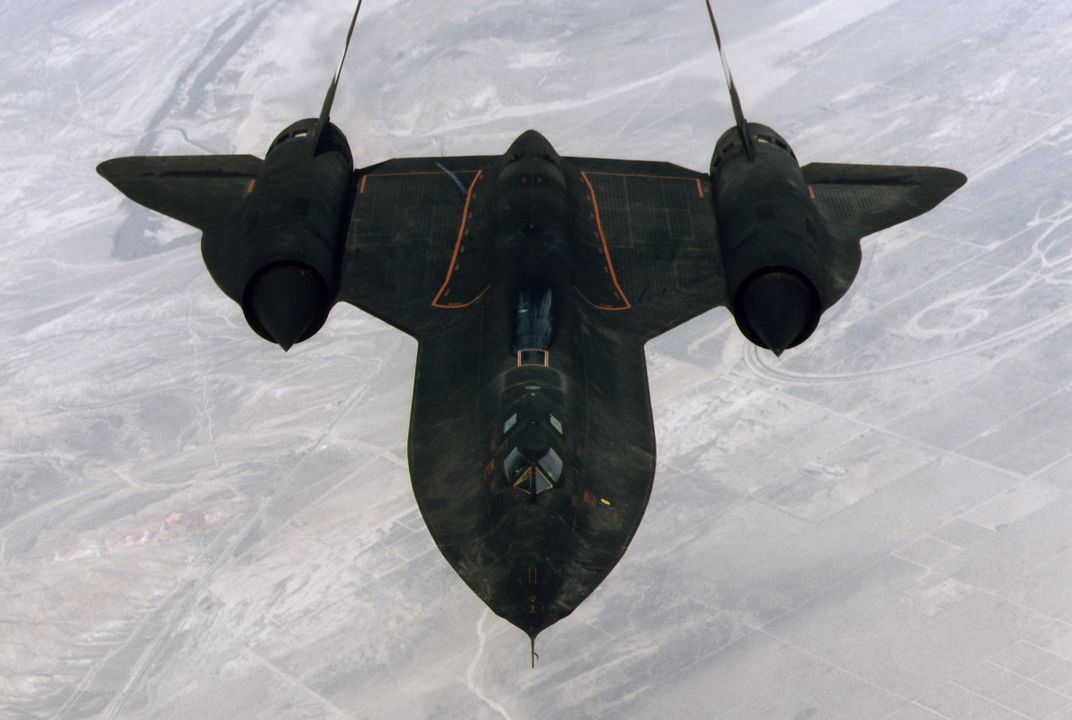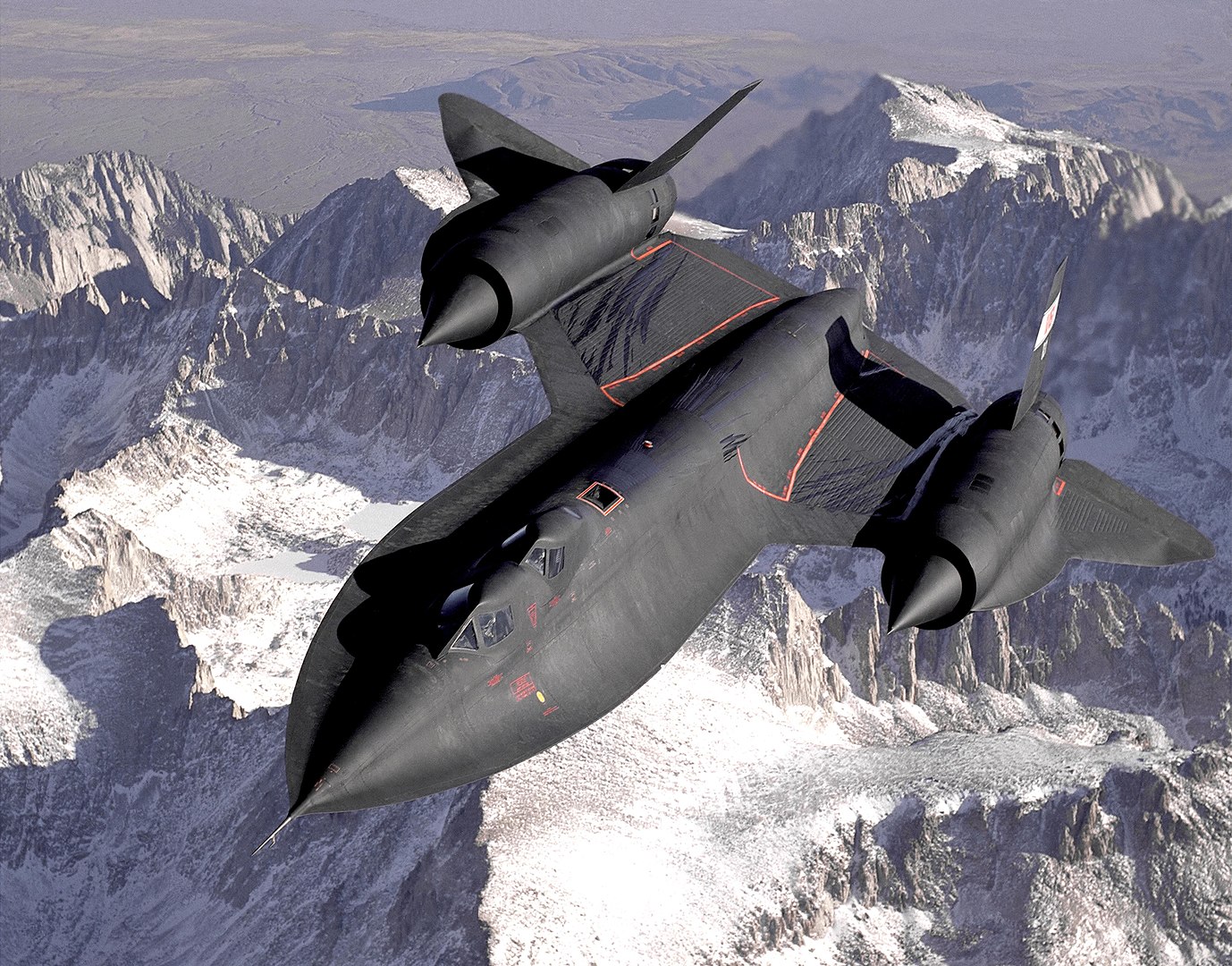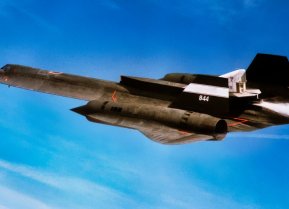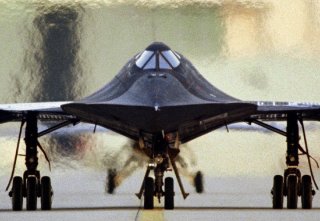SR-71 Blackbird – the Fastest Plane in History Is Rotting In a Museum
It is hard not to be impressed when seeing the Lockheed SR-71 up close, even if it is difficult for many to fully appreciate the significance of the aircraft. Today, it is possible to see several retired "Blackbirds" – its unofficial moniker – in various museums around the country.
Meet the SR-71: It is hard not to be impressed when seeing the Lockheed SR-71 up close, even if it is difficult for many to fully appreciate the significance of the aircraft. Today, it is possible to see several retired "Blackbirds" – its unofficial moniker – in various museums around the country.
Yet, there was a time when it was about as secret as a secret can get.
Known unofficially as the "Blackbird" for its black paint job, which was specially developed to dissipate heat, the SR-71 featured sleek lines that may have seemed "futuristic" when it was flying on top-secret missions years before American astronauts headed to the moon.
The paint was just one of several innovations that had to be developed specifically for this truly remarkable aircraft.
Like Reinventing the Wheel
The SR-71 was born out of the Lockheed "Skunk Works," the official pseudonym for Lockheed Martin's Advanced Development Programs, formerly called Lockheed Advanced Development Projects.
Originally founded in Burbank, California, it would go on to have locations at the United States Air Force Plant 42 (Palmdale, California) and United States Air Force Plant 4 (Fort Worth, Texas). The facility already had a proven track record during the Cold War to deliver "impossible" technologies on an incredibly short, but strategically critical deadline.
The goal of this project, which began in the late 1950s, was very much to stop a potential war and to safeguard the United States by allowing it to determine what our potential adversaries might be up to.
The Central Intelligence Agency (CIA) and United States Air Force called for a new plane that could operate at extreme altitudes, speeds, and temperatures.

However, that meant that everything from the tires, oil, fuel, and even paint had to be created from the ground up. The SR-71 project was headed up by Kelly Johnson, one of the preeminent aircraft designers of the twentieth century, who suggested, "Everything had to be invented. Everything."
And he truly meant everything, including that aforementioned paint!
SR-71 - A Titanium Aircraft
The Blackbird was the first to utilize titanium alloy – which provided the strength of steel but at a relatively lightweight –for the airframe. Along with its low weight, titanium was the only material that could provide the durability of stainless steel at excessive temperatures.
Today, titanium is used in everything from golf clubs to bicycle frames and even a pigment of house paint. But in the early 1960s, it was practically unobtainium.
The United States didn’t have any major sources of the metal, nor did any U.S. allies. That is somewhat ironic as it turns out that titanium is the ninth most abundant element on Earth. It is almost always present in igneous rocks and the sediments derived from them. It occurs in the minerals ilmenite, rutile, and sphene and is present in titanates and many iron ores.
The issue was that while it was fairly common, the Soviet Union pioneered its use in military and submarine applications.
The U.S. government sought to obtain as much of the lightweight material as possible, declaring it a strategic metal – while a stockpile of titanium sponge was even maintained by the Defense National Stockpile Center.
However, much of the titanium used in the SR-71 ended up being sourced from the same nation the aircraft was used to spy on – namely the Soviet Union! The raw materials were bought from third-world countries and fake companies set up by the CIA.
"The airplane is 92% titanium inside and out. Back when they were building the airplane the United States didn’t have the ore supplies – an ore called rutile ore. It’s a very sandy soil and it’s only found in very few parts of the world. The major supplier of the ore was the USSR. Working through Third World countries and bogus operations, they were able to get the rutile ore shipped to the United States to build the SR-71," former SR-71 pilot Colonel Rich Graham told the BBC.
It wasn't just obtaining the titanium that was an issue for the designers.
There was also a very valid concern that the use of cadmium-plated steel tools could weaken the body of the aircraft if mishandled, which meant that even new tools had to be designed and fabricated.
Those too were made from titanium.
In addition to the actual aircraft, designers had to develop special suits for the pilots to protect them from the extreme temperatures, while it has been reported that the glass on the cockpit would get so hot that meals could be heated upon it.
High Speed and High Flying
The SR-71 Blackbird, which first took flight in 1964, could enter hostile airspace, take photographs from those extreme heights like a tourist on vacation, and still be on its way before an enemy had a chance to even take a shot at it.
It achieved a record top speed of 2,193 mph – and while other aircraft could reach such extreme speeds in theory – but would melt due to the atmospheric friction and heat – the Blackbird could maintain it for extended periods. It still holds the record for a cross-country flight, traveling from Los Angeles to Washington, D.C. in just 64 minutes, 20 seconds.
In addition to flying fast, the SR-71 also set an altitude record – reaching 25,929 meters. The aircraft was able to cruise to 80,000 feet above the earth, near the edge of space, and outfly any missile that was launched at it. It flew so high that pilots navigating by sight couldn't even rely on ground features such as roads and instead needed to look at the mountains, rivers, and major coastlines to get their bearings.
During its operational lifetime, the SR-71 provided intelligence about the Yom Kippur War in 1973, the Israeli invasion of Lebanon in 1982, the American air forces' raid on Libya in 1986, and the revelation of Iranian Silkworm missile batteries in 1987.

Thanks to its speed and other capabilities, not a single SR-71 was ever shot down – yet a dozen were tragically lost in accidents.
Fast in the Air – But Getting There Was Not Easy or Fast!
The SR-71 may have been quite fast in the air, but unlike combat aircraft, which could be "scrambled" and in the air within minutes, each flight of the SR-71 was more like a space launch of the era. Getting the Blackbird into the sky took hours of preparation and a large team to ensure everything was in order.
It used a special fuel, which also leaked all over the tarmac – but it was actually designed to do so.
That is because the SR-71 didn't use standard aviation fuel, but a special military specification fuel called MIL-T 38219, or Jet Propellant 7. Shell Oil had been called upon to invent a compound blend to meet the military's requirements, and the result was three times as expensive as the type of fuel used by airliners of the era.
In addition, the titanium fuselage panels of the SR-71 were also loosely fitted to the aircraft's frame to allow for heat expansion, while the fuel system was also not sealed because there were no seals that were flexible and durable enough to deal with the kind of temperatures and shrinking-expansion cycles. As a result, while the plane would leak fuel while on the runway, it stopped leaking once the aircraft came up to temperature!

The SR-71 had to be refueled right after takeoff, and it wasn't only due to the leaks on the ground. JP-7 reached temperatures over 300 degrees F during the Mach 3 cruise, which made the fumes in each of the six fuel tanks very volatile and potentially explosive. Taking off with less fuel was simply a safer option.
The U.S. Air Force retired its fleet of SR-71s on Jan. 26, 1990, because of a decreasing defense budget and high costs of operation. There was a brief reactivation with a final retirement in 1999.
Though most of the SR-71s in museums have long stopped leaking fuel, some visitors have reported still smelling the JP-7. It could be described as a sweet smell of success – a reminder of what the SR-71 could do.
Author Experience and Expertise:
A Senior Editor for 19FortyFive, Peter Suciu is a Michigan-based writer. He has contributed to more than four dozen magazines, newspapers, and websites with over 3,200 published pieces over a twenty-year career in journalism. He regularly writes about military hardware, firearms history, cybersecurity, politics, and international affairs. Peter is also a Contributing Writer for Forbes and Clearance Jobs. You can follow him on Twitter: @PeterSuciu.
Images are all Creative Commons.


